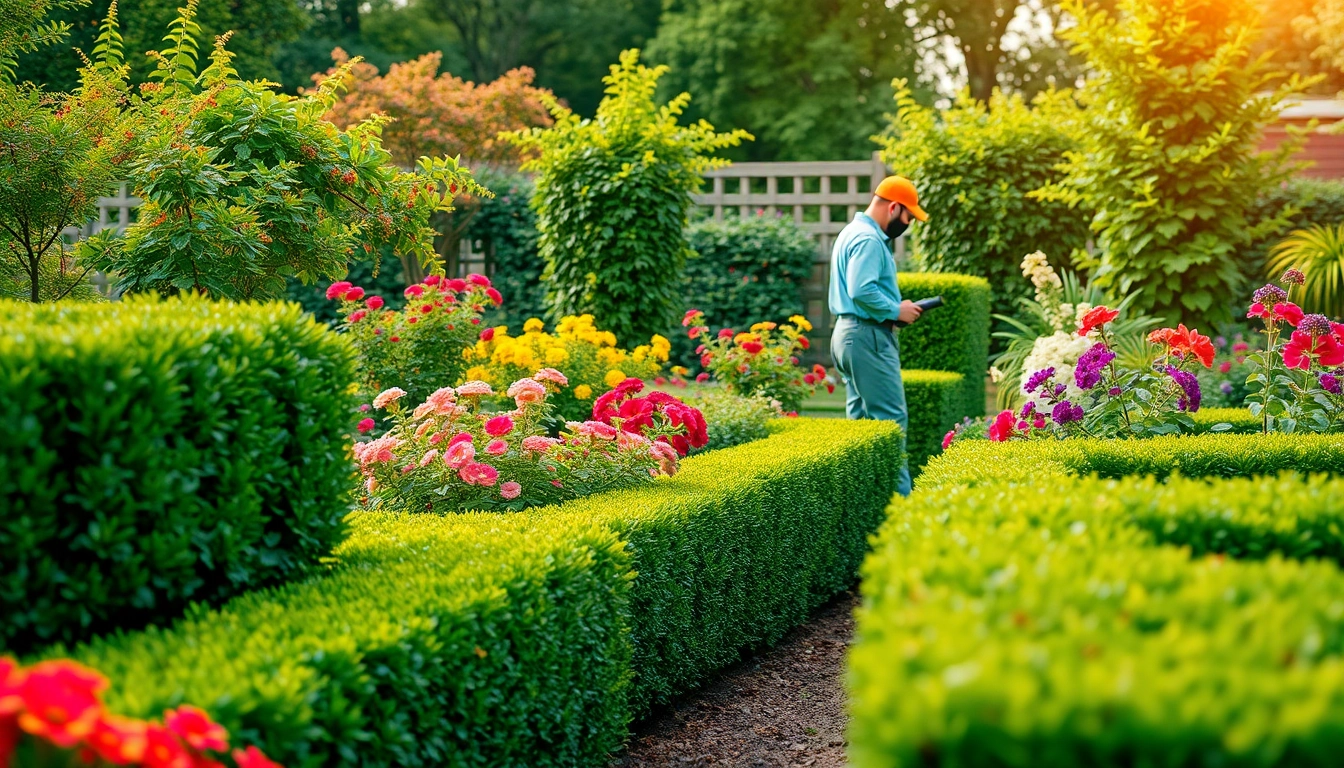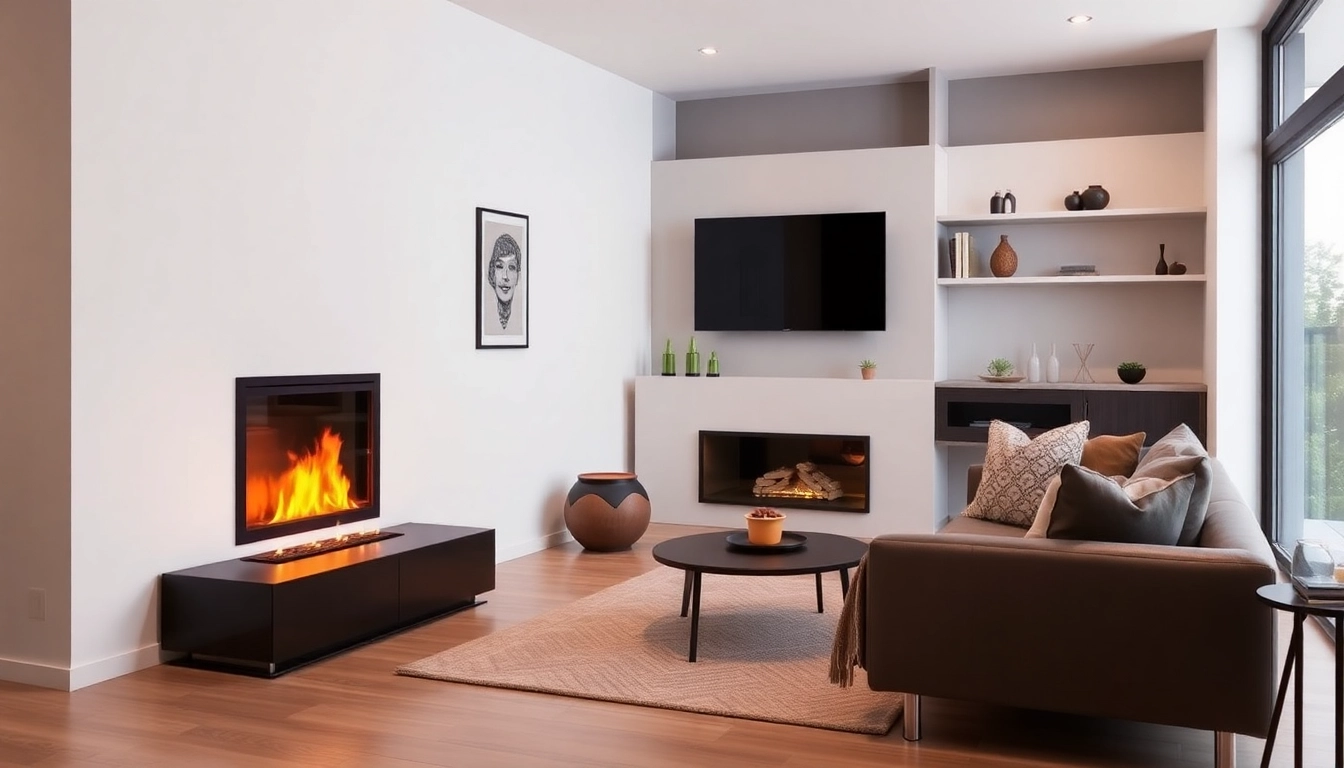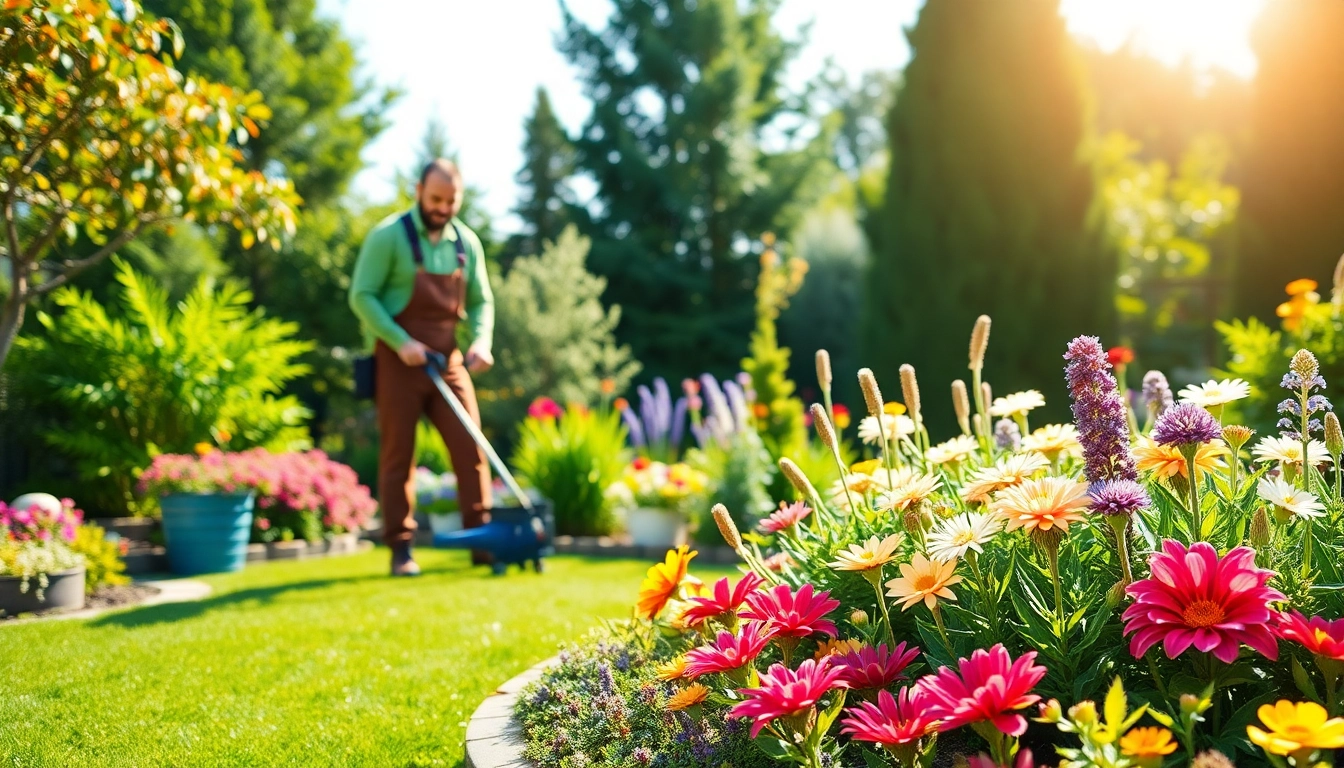Understanding Wandbegrünung Indoor
What is Indoor Wall Greening?
Indoor wall greening, or Wandbegrünung Indoor, is a design practice that involves incorporating living plants into indoor spaces, often in a vertical configuration. This method transforms standard walls into lush, green features that not only enhance aesthetic appeal but also improve air quality and create a calming atmosphere. It can be applied in various settings, including homes, offices, and public spaces.
Advantages of Living Walls
The benefits of integrating living walls into indoor environments are numerous and multifaceted. Here are some of the primary advantages:
- Improved Air Quality: Plants naturally filter toxins from the air, significantly enhancing the indoor air quality. Studies show that well-planned greenery can reduce pollutants, including formaldehyde, benzene, and trichloroethylene.
- Aesthetic Appeal: A vertical garden adds a beautiful focal point to any room, contributing to a more inviting and vibrant ambiance.
- Sound Absorption: Natural greenery can help reduce noise levels by absorbing sound, making spaces quieter and more peaceful.
- Thermal Regulation: Living walls can help regulate indoor temperatures, as plants release moisture into the air, which can cool down spaces considerably during hot weather.
- Increased Productivity: Studies have shown that exposure to plants can increase productivity and creativity in work environments, making living walls an excellent addition to office spaces.
Choosing the Right Plants for Your Space
Selecting the appropriate plants for your indoor wall greening project is crucial. Factors such as light availability, humidity, and space size will influence your choices. Some popular options for indoor living walls include:
- Ferns: Known for their lush foliage, ferns thrive in low light and add a delicate touch.
- Succulents: These drought-resistant plants are perfect for low-maintenance living walls, requiring less frequent watering.
- Philodendrons: With their vibrant leaves and crawling nature, they are ideal for creating a lush, green wall feature.
- Ivies: These hardy plants can thrive in various conditions and their climbing nature makes them excellent for vertical space.
- Pothos: Known for their air-purifying qualities and ability to adapt, pothos can thrive in low light and are easy to care for.
Designing Your Wandbegrünung Indoor
Factors to Consider in Design
Designing a successful indoor living wall involves careful consideration of multiple factors:
- Space: Assess the available wall space, including height, width, and position to determine how many plants can be accommodated.
- Light Conditions: Evaluate the amount of natural light the area receives to select plants that will thrive within those conditions.
- Maintenance Accessibility: Ensure that the plants can be easily accessed for maintenance such as watering and pruning.
- Climate: Indoor environments often have controlled temperatures, which can differ significantly from outdoor conditions.
Innovative Layout Ideas
When it comes to layout, creativity knows no bounds. Here are some innovative ideas to inspire your indoor wall greening project:
- Geometric Patterns: Arrange plants to create geometric shapes or patterns, adding a modern touch to the design.
- Mixed Heights: Use shelves or staging to create varying heights, making the wall visually dynamic.
- Layering: Incorporate different plant types and sizes to create depth and texture, making the wall an intricate focal point.
- Incorporate Art: Blend your plants with artwork or design elements, integrating nature with personal style.
Using Colors and Textures Effectively
The colors and textures of the plants play a significant role in the overall aesthetic of the indoor living wall. When designing:
- Contrast: Use lighter color foliage against darker materials or backgrounds to create striking contrasts.
- Monochrome Styles: Stick to plants within the same color palette for a more cohesive and sophisticated look.
- Texture Variation: Combine smooth, glossy leaves with coarse-textured plants to create an engaging and tactile experience.
Installation Process for Indoor Plant Walls
Do-It-Yourself vs. Professional Installation
Choosing between a DIY approach and hiring professionals can significantly affect the success of your indoor living wall project:
- DIY Installation: This option can be cost-effective and allows for greater creative freedom. However, it requires knowledge of plant care and wall structure to ensure long-term success.
- Professional Installation: Hiring professionals generally guarantees a higher quality setup, ensuring that all factors such as irrigation and plant selection are optimally configured for growth.
Step-by-Step Installation Guide
If you opt for a DIY installation, follow these steps to ensure a successful setup:
- Planning: Measure the wall area and decide on the arrangement and types of plants you wish to use.
- Choosing a System: Select a wall-mounted system or pots that facilitate adequate drainage and plant growth.
- Prepare the Surface: Ensure the wall is clean and, if necessary, treat it to prevent moisture damage.
- Install the Structure: Mount the chosen plant holder or grid onto the wall securely.
- Planting: Begin placing the plants into the holders, ensuring that they are positioned according to their light and water needs.
- Watering: Set up an irrigation system if necessary and give your plants a thorough watering once installed.
- Finish: Add decorative touches or accessories to enhance the overall appearance of your wall greening setup.
Common Mistakes to Avoid
While embarking on your indoor greening journey, be cautious of these common pitfalls:
- Overcrowding Plants: Planting too many species in a small area can lead to competition for resources and hinder growth.
- Ignoring Light Conditions: Failing to consider the specific light needs of each plant can lead to underperformance.
- Neglecting Maintenance: Setting up a living wall without planning for regular care can result in unmanageable plants and aesthetics.
Maintenance Best Practices
Watering and Light Requirements
Carefully monitoring the watering and lighting needs of your plants is vital for a thriving indoor wall:
- Watering: Depending on the plant species, water requirements will vary. Generally, it’s essential to check the moisture level regularly, avoiding both overwatering and drought conditions.
- Light Settings: Ensure that your plants receive adequate light—affix grow lights for spaces with insufficient natural light.
Pest Management for Indoor Plants
Indoor plants can still fall victim to pests. Implement these strategies to keep them healthy:
- Regular Inspection: Frequently check for visible pests and signs of infestations, such as webbing or holes in leaves.
- Natural Pest Control: Utilize insecticidal soap or neem oil to effectively manage minor pest issues without harming the plants.
- Encourage Beneficial Insects: Introducing ladybugs or predatory mites can help manage pest levels naturally.
How to Refresh Your Plants
Over time, your indoor living wall may require refreshing to maintain its aesthetic appeal and health:
- Replanting: If some plants outgrow their space, consider replacing them with new varieties.
- Trimming: Regularly prune plants to manage their growth and encourage a bushier appearance.
- Fertilizing: Use appropriate fertilizers based on plant types to replenish nutrients as they are depleted.
Cost Considerations for Wandbegrünung Indoor
Budgeting for Materials and Plants
Determining the initial cost for your indoor wall greening plants involves thorough budgeting for various aspects, including:
- Plant Costs: The price can vary widely depending on the types of plants chosen, from inexpensive ferns to rare tropical varieties. Estimate between $5 to $50 per plant on average.
- Support Systems: Depending on the complexity, installing a vertical garden system can range from $100 to several thousand dollars.
- Soil and Nutrients: Factor in costs for high-quality potting soil and fertilizers to promote strong growth.
Understanding Installation Costs
If you choose professional installation, keep in mind the following:
- Labor Costs: Hiring professionals typically ranges from $50 to $150 per hour, depending on their expertise.
- Additional Services: Some companies offer maintenance packages that can add to your overall budget but save you time and effort in the long run.
Value Addition to Your Property
Finally, consider the long-term value of investing in an indoor living wall:
- Aesthetic Enhancement: An appealing visual environment can significantly enhance the value of your property, making it more attractive to potential buyers or tenants.
- Increased Air Quality: By improving air quality and creating a healthier living space, a well-maintained living wall can be a selling point in eco-conscious markets.


